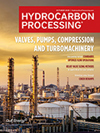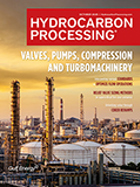Environment & Safety
Industry Perspectives: What opportunities will 2019 bring to the global HPI?
To continue communication and feedback with <i>Hydrocarbon Processing</i>’s global audience, the editors have posted a new poll to HydrocarbonProcessing.com.
Cybersecurity: Why emails should be a cybersecurity priority
The oil and gas industry is becoming increasingly digitized—but is it improving its cybersecurity measures to match?
Viewpoint: European refining 2050: Turning the vision into reality
Europe’s refiners, through their industry organization Fuels Europe, have set out their long-term ambitions in a new program called Vision 2050.
Digital: Three steps to implement a 21st-century disaster recovery plan
In the wake of Hurricane Florence, businesses across the US had another reminder of how unpredictable and unavoidable disasters are when they strike.
Viewpoint: Shifting safety from cost to value for oil and gas companies
In today’s business and regulatory environment, controlling a refinery or other high-hazard processing plant is increasingly demanding.
Engineering Case Histories: Case 105—Temperature distribution along a flare line
During an engineer’s career, many interesting questions come up that may not have a ready or good answer.
Refining: Extend the life of storage tanks with a novel single-coat epoxy coating
In the oil and gas industry, time is money.
Editorial Comment: The materials that advance modern life
Refineries and petrochemical plants contain some of the harshest environments on the planet.
Causes interact in industrial accidents and life
Before discussing failure causes, it is helpful to understand why the idea of process safety management (PSM) has taken hold in the past few decades.
Hazardous area classification compliance: Focus on communication
On November 30, 2013, an explosion and fire occurred at the UCB Farchim SA site in Switzerland. Fortunately, no injuries or fatalities occurred.

- Ducor Petrochemicals, Blue Circle Olefins partner to create a fully circular supply chain for polypropylene 11/18
- World's first: Air Liquide’s innovative technology converts ammonia into hydrogen at industrial scale 11/18
- Borouge to supply advanced polyolefin solutions for next-generation vehicles 11/18
- ASTM International signs MoU with Gulf Cooperation Council Laboratory Company for Technical Services (GCC Lab TSCo.) 11/18
- KBC launches Visual MESA Energy Management System 7.3 11/18
- MHI Compressor secures steam turbine contract at Baton Rouge (U.S.) olefins plant 11/18




